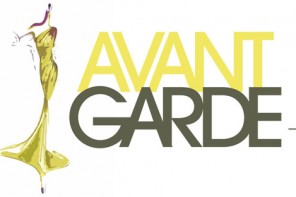Cape Town was one of four cities short-listed for the prestigious 2012 Sustainable Transport Awards held in Washington recently, with its non-motorised transport (NMT) and bus rapid transit network MyCiti receiving an honourable mention.
One of 16 other cities nominated, Cape Town made it into the finals along with Argentina´s Buenos Aires, San Francisco in the US and Medellin in Colombia. Medellin and San Francisco were chosen as eventual overall winners.
The awards were hosted by the Institute for Transportation and Development Policy, an organisation which helps cities to implement transport solutions that cut greenhouse gas emissions, reduce poverty and improve the quality of urban life.
Longest continuous cycling lane
Cape Town received the recognition for its 16km bicycle lane, the longest continuous such lane in Africa.
It runs parallel to one of the MyCiti lanes, both forming part of the city´s plans to provide a quality integrated transport system to its inhabitants.
The two dedicated lanes run along the R27, better known as the West Coast Road. This arrangement has cut travelling time by half for commuters as the rapidly expanding West Coast area of Cape Town has no rail services, the other popular form of public transport for the more than 3-million Capetonians.
The judging panel noted that the bus and bicycle lanes in this area are particularly important as no mass transport facilities were previously available.
Mayoral committee member for transport, roads and stormwater Brett Herron accepted the award on behalf of the city. He said that while Cape Town is still in its infancy in providing a safe and efficient quality public transport service to everybody, city management remains committed to the process.
“This award, which sees us on stage with some of the world’s greatest cities, is a massive vote of confidence in our pursuit of this objective and is enormously encouraging.”
The other city nominees were Jaipur, Fazilka and Bihar in India; Singapore; Antalya in Turkey; Cuenca in Ecuador; Chicago and Minneapolis in the US; Lviv in Ukraine; South Korea´s Seoul and Chnagwon; Jerusalem in Israel; and Seville in Spain.
Integrating all
The MyCiti and cycle/pedestrian lanes form part of Cape Town´s approved integrated rapid transit network (IRT), a business plan for all public transport measures and upgrades.
It aims to bring about a more sustainable and balanced integrated transport system, especially linking the poorer, outlying areas of Cape Town to economic and social nodes in the city.
Now six years in the making, the first phase of the IRT started in 2007, focusing on the inner city basin and the Blaauwberg-Atlantis corridor first because of the extreme congestion experienced in these areas during peak traffic periods.
A MyCiti bus service was also introduced between the Cape Town Civic Centre and the Cape Town International Airport and for the duration of the hugely successful 2010 Fifa World Cup, the city offered a dedicated MyCiti service to spectators and tourists.
Included in the IRT portfolio are the metro rail network, the MyCiti network, conventional bus and minibus operations, metered taxis, and bicycle and pedestrian lanes, all of which will eventually be connected to make an integrated whole, says Herron.
“Ultimately we want a citywide network, with priority given to projects which links homes with key transport nodes.”
During the second phase MyCiTi will expand to the outlying suburbs of Atlantis and Dunoon in the coming months, linking them to the retail, commercial and industrial centres of the city.
The network will also be extended to the metro´s south-eastern areas including the poorer Cape Flats suburbs of Khayelitsha and Mitchells Plain. In this way the city will support the economic and social inclusion of these residents.
“The City´s objective is to make all these modes work as a seamless and integrated package of options for the travelling public,” confirms Herron.
Bike, walk or skateboard
An important part of MyCiti is the network of cycling paths and upgraded pedestrian walkways connected to these bus routes. One of the first, the NMT lane from Table View in the northern suburbs to the city centre is already a favourite with cyclists and pedestrians.
“Cape Town is very committed to the non-motorised network. The City is known to be a cycle-friendly city. We want to build on this image and increase the cycle model share across the city.”
Cape Town plays host to the Cape Argus Cycle Tour every year, a gruelling 110km race with the spectacular Cape Peninsula as backdrop. Since 1978 it’s been recognised as the world’s largest individually timed cycle race and attracts over 35 000 cyclists from around the world ever year.
Cape Town has budgeted for 19 bicycle and pedestrian projects at a cost of R50-million (US$6.5-million) for this year, with the projects in various phases of development, from design to actual construction.
As part of the network, secure bicycle storage facilities will be provided at major MyCiti and railway stations. Meanwhile, bicycles may be taken on the buses except during peak periods.
The NMT upgrades include street furniture, signage and landscaping, and are creating jobs through the government´s Expanded Public Works Programme which provides poverty and income relief through temporary work for the unemployed.
“Our future vision for transport in Cape Town is a cycle- and pedestrian-friendly city with a well-connected network of NMT infrastructure providing the opportunity to walk or cycle or skateboard as far as you like on safe, dedicated lanes.”
The entire IRT network is expected to take about 20 years to complete.
Words by Emily van Rijswijck via Media Club South Africa











